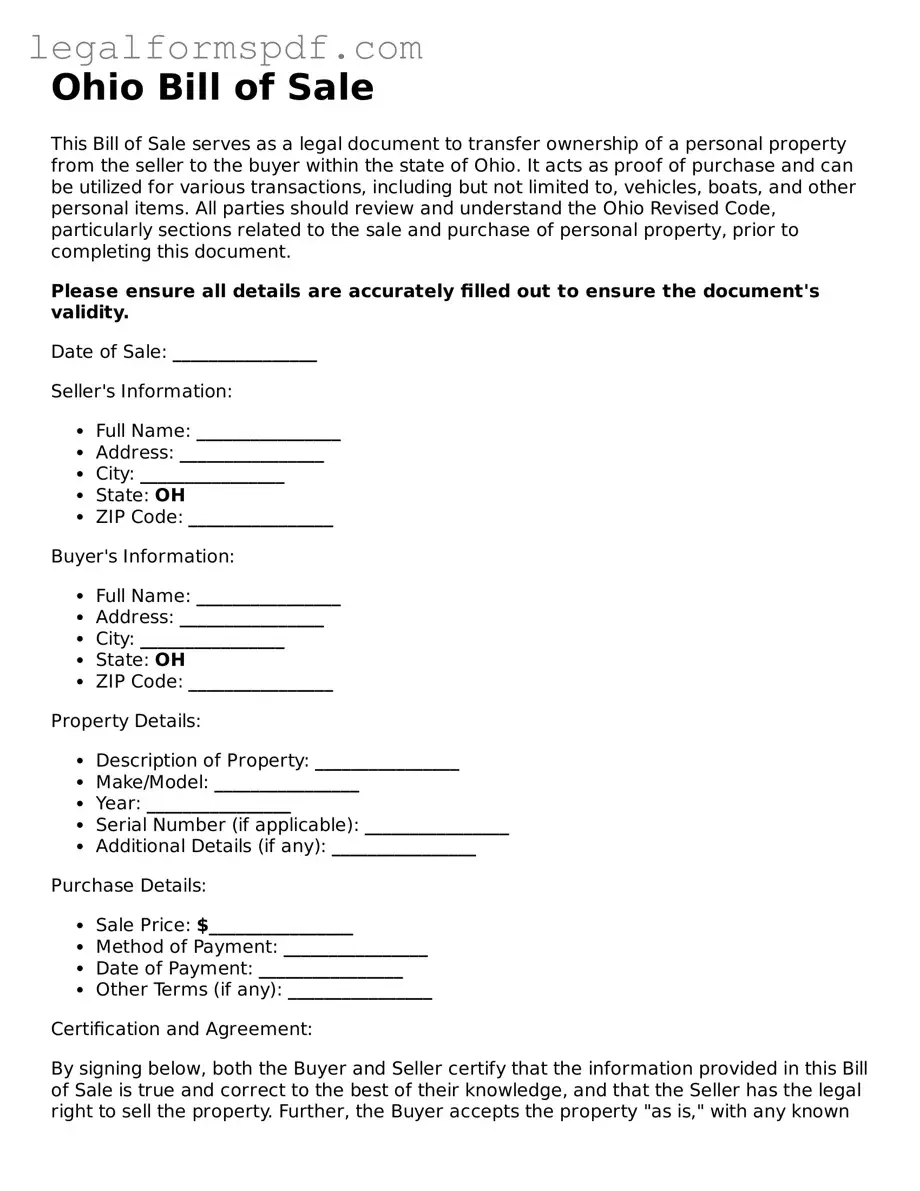What is an Ohio Bill of Sale form?
An Ohio Bill of Sale form is a legal document used during the sale of property in Ohio, indicating that an item was sold by one party to another. This document is crucial as it records the transaction in detail, including what was sold, the sale price, and the date of sale. It acts as a receipt for the transaction and can serve as evidence of ownership transfer.
Is an Ohio Bill of Sale form required for all sales transactions in Ohio?
No, an Ohio Bill of Sale form is not required for all sales transactions; however, it is highly recommended for both the buyer's and seller's protection. It is particularly important for private sales of vehicles, boats, firearms, and other major assets. Having this document can resolve disputes about the sale or prove ownership if the item's legality comes into question.
What information needs to be included in an Ohio Bill of Sale form?
The Ohio Bill of Sale form should include specific details to ensure it is comprehensive. These details typically consist of the date of the transaction, the names and addresses of the buyer and seller, a thorough description of the item being sold (including make, model, year, and serial number, if applicable), the sale amount, and the signatures of both the buyer and seller. It might also include terms of the sale and warranty information, if any.
Do I need to notarize my Ohio Bill of Sale form?
While notarization of an Ohio Bill of Sale form is not a legal requirement, it is a wise step to authenticate the document. Notarization provides an additional layer of verification, confirming that the signatures on the form are genuine and that the document can be trusted. This can be especially helpful if the sale is questioned or if a legal issue arises.
How can I use an Ohio Bill of Sale form once it's completed?
Once completed, the Ohio Bill of Sale form serves multiple purposes. It can be used by the buyer to prove ownership of the item, which is helpful for registration and insurance purposes. For the seller, it provides proof that the item was legally transferred to the new owner, releasing them from liability for what the buyer does with the item. It's advisable to keep copies of the bill of sale for both parties' records.
Can the Ohio Bill of Sale form be used as a legal document in court?
Yes, the Ohio Bill of Sale form can be used as a legal document in court. It acts as a binding agreement between the buyer and seller regarding the transaction and can provide critical evidence in disputes, fraud cases, or when proving ownership. Ensuring the form is accurately filled out and, if possible, notarized, can enhance its credibility as a legal document.
